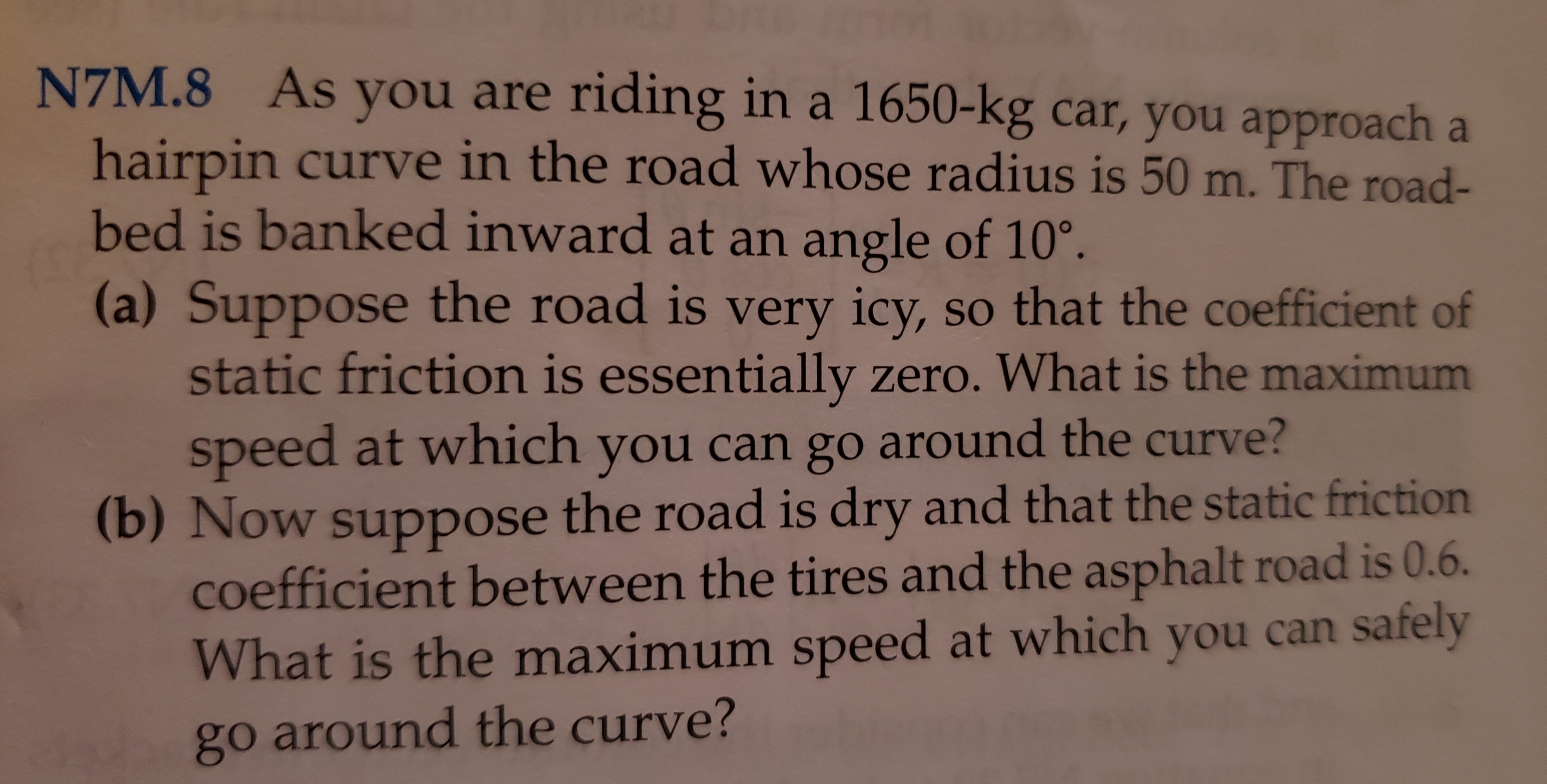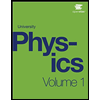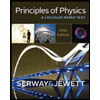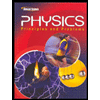As you are riding in a 1650-kg car, you approach a N7M.8 hairpin curve in the road whose radius is 50 m. The road- bed is banked inward at an angle of 10° (a) Suppose the road is very icy, so that the coefficient of static friction is essentially zero. What is the maximum speed at which you can go around the curve? (b) Now suppose the road is dry and that the static friction coefficient between the tires and the asphalt road is 0.6. What is the maximum speed at which you can safely go around the curve?
As you are riding in a 1650-kg car, you approach a N7M.8 hairpin curve in the road whose radius is 50 m. The road- bed is banked inward at an angle of 10° (a) Suppose the road is very icy, so that the coefficient of static friction is essentially zero. What is the maximum speed at which you can go around the curve? (b) Now suppose the road is dry and that the static friction coefficient between the tires and the asphalt road is 0.6. What is the maximum speed at which you can safely go around the curve?
University Physics Volume 1
18th Edition
ISBN:9781938168277
Author:William Moebs, Samuel J. Ling, Jeff Sanny
Publisher:William Moebs, Samuel J. Ling, Jeff Sanny
Chapter6: Applications Of Newton's Laws
Section: Chapter Questions
Problem 77P: A car rounds an unbanked curve of radius 65 m. If the coefficient of static friction between the...
Related questions
Question

Transcribed Image Text:As you are riding in a 1650-kg car, you approach a
N7M.8
hairpin curve in the road whose radius is 50 m. The road-
bed is banked inward at an angle of 10°
(a) Suppose the road is very icy, so that the coefficient of
static friction is essentially zero. What is the maximum
speed at which you can go around the curve?
(b) Now suppose the road is dry and that the static friction
coefficient between the tires and the asphalt road is 0.6.
What is the maximum speed at which you can safely
go around the curve?
Expert Solution
This question has been solved!
Explore an expertly crafted, step-by-step solution for a thorough understanding of key concepts.
This is a popular solution!
Trending now
This is a popular solution!
Step by step
Solved in 7 steps with 7 images

Recommended textbooks for you

University Physics Volume 1
Physics
ISBN:
9781938168277
Author:
William Moebs, Samuel J. Ling, Jeff Sanny
Publisher:
OpenStax - Rice University

Principles of Physics: A Calculus-Based Text
Physics
ISBN:
9781133104261
Author:
Raymond A. Serway, John W. Jewett
Publisher:
Cengage Learning

Glencoe Physics: Principles and Problems, Student…
Physics
ISBN:
9780078807213
Author:
Paul W. Zitzewitz
Publisher:
Glencoe/McGraw-Hill

University Physics Volume 1
Physics
ISBN:
9781938168277
Author:
William Moebs, Samuel J. Ling, Jeff Sanny
Publisher:
OpenStax - Rice University

Principles of Physics: A Calculus-Based Text
Physics
ISBN:
9781133104261
Author:
Raymond A. Serway, John W. Jewett
Publisher:
Cengage Learning

Glencoe Physics: Principles and Problems, Student…
Physics
ISBN:
9780078807213
Author:
Paul W. Zitzewitz
Publisher:
Glencoe/McGraw-Hill